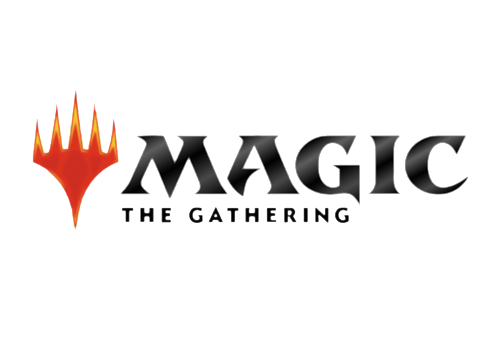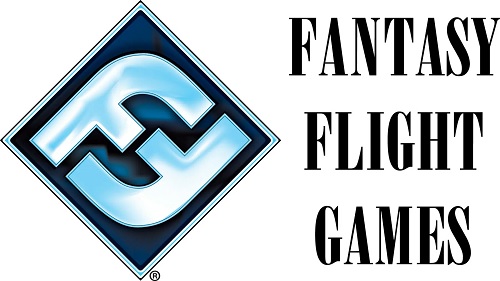No products in the basket.
Online shop for board games / tracked and fast delivery
1. Introitus
In October 2020, we finished the development of 1998 ISS — designer diary here — and we did not have any specific idea for our next game. One day, Gerard was listening to Mozart’s Requiem while working. The Lacrimosa movement began and…eureka! From what he recalled from his years in Vienna, there was a story that may work for a game.
The original music sheet of Mozart’s Lacrimosa
In our first meetings, Ferran was adamant that Mozart had to be a central figure. Our main goal before starting any development was deciding the story that the game had to tell: Who would we be while playing?
This question had several reasonable answers, but with different results regarding thematic credibility. We decided to delve into Mozart’s life, focusing on his later years, to gather documentation. We also did some research on how society worked at the time and what the role and relevance of musicians was in that context.
Game design allows your curiosity to be indulged. You learn about trivial subjects that have no direct use on your day-to-day life, and that’s great. We spent about two months reading, inquiring, enjoying ourselves, and sharing the different historic approaches on the subject. Our goal still was to answer the question of who we would be in the game, but we held off on seeking game mechanisms or creating any kind of prototype.
Some of the sources we went to
After thinking about it for a long time, we finally defined the answer to our question: We would be Mozart’s sponsors. The composer’s presence would be felt on all levels, but we would never act in his name.
We were in this phase of the process when we were contacted through Twitter by David Esbrí, Devir‘s editor. We pitched him the game plan in two sentences, and even if he did not make it apparent at that moment, he already found it super interesting. There was no game, no mechanisms…but at a thematic level, we possibly were on the right track.
2. Kyrie Eleison
We started to sketch the main thematic aspects that the game should feature:
• A map of Europe with the main cities Mozart travelled to. The roads represent his trips, and we only accompany him, paying for all his expenses in the process. We use an idea from the game Isla Dorada in which all players share the moving pawn.
Working on the first map for the game, with the real Mozart trips in the background
• Physically completing the Requiem score sheet was thematically essential. The game would include some composers since as patrons the players do not write music. We got some inspiration from the 18xx series to include participations per composer. It helped us manage indirect majorities thematically in a more coherent way. Instead of companies, we would feature Mozart pupils who helped complete the Requiem: Süssmayr, Eybler, Freystädler, and Stadler.
• And, finally, the Mozart works. We decided to separate them by typology: opera, symphonies and concerts, religious music, and chamber music. As sponsors, players commission the piece to the composer, which allows them to get some economic benefit out of it later on.
The first prototype, still with no principal mechanism
We missed a main mechanism that allowed for the game to flow, to allow some degree of playability without eclipsing the three thematic items mentioned above. We put our heads together to think about gaming experiences that we deemed deeply thematic to see what mechanisms allowed for that in a transparent manner — and that was the path that led us to the solution.
First, we used the mechanism from World Without End in which you always play two cards, one to perform your action and the other to discard. This creates a nice and painful choice that we thought fit the game. We also wanted the game to be agile, so we needed to avoid players deciding between twelve cards.
So we merged the former with K2, an epic experience of climbing to the top of a mountain. In this game, you have a reduced hand of six cards, of which you must play three, forcing you to always adapt. The mechanism allows for some short-term planning while reducing the analysis-paralysis as you have limited options. This hybrid system worked extremely well since the first test.
Incorporating the main mechanism of the game
We also rescued an idea discarded from the 1998 ISS development: using a constant size deck. The players could improve their deck, but never increase its number of cards, thus creating a layer of engine-building.
Notes of the meeting in which we defined the four mini games that will conform the game structure
3. Sequentia
In February 2021, Josep, Ferran’s dad, died of illness. He was passionate about music, and Lacrimosa was his favorite piece. He had interpreted it many times, when the Orfeó Manresà performed the Requiem. At that moment, this project took a turn into In Memoriam.
Mozart’s Requiem and our original realistic approach of its unfinished parts
4. Offertorium
After a long time of thought and analysis, maybe it was time to get out of idea-world and start to build a game and test it. Plenty of ideas, zero plays. So we worked towards getting a first version of the game for the “Protos y Tipos“, a gathering in Zaragoza, Spain to test prototypes that was scheduled to take place in March 2021.
In a bit of a rush, we managed to have a barely playable prototype with the first round of the game and not much else. The playtesting of that kind of sketch of a prototype confirmed how suggestive the theme was. The nine-card engine worked in a clean way, and unexpectedly at this level of development, people enjoyed the playing experience.
We had a good base for the game with a well-defined core. At this moment we realized that our approach to the process, dedicating months to define the structure of a game, was not wasted time.
First play in which we managed to reach the end of the game
The development work was an interactive process with multiple tests, revisions, and simplifications of the mechanisms and components. These are the main design decisions we made:
Less is more: We started with six resources of musical inspiration of the composer, which were reduced to three memory resources.
Eliminate, even if it hurts: The game had a track for Mozart’s economy that reflected the money problems he had in his life. The track modified the cost of opus and trips. We try very hard to keep it in the game because we loved how it fit thematically, but it was too complex to maintain. The bonuses at the end of each period are the leftovers of this mechanism.
Unify and conquer: The opus and improvement (later called memory) cards were split into two different tracks. We joined them to simplify maintenance. This also created an interesting synergy.
Simplify the game steps: The flow of the game during the composition of the Requiem gave us some problems. At the beginning, each composer had an individual board in which you contracted tokens of your color. After that, you placed a token with the picture of that composer to complete a part of the music sheet. That meant a mental double step that was hard to manage. Also, the flow of the game did not recreate the feel of completing the piece as the music sheet ended up full of people’s faces.
We added tokens with eighth and sixteenth notes, joining the previous two steps while also increasing the thematic feel. We then replaced the composer board by tiles that move to the individual board improving the readability of bonuses.
If it does not work, try dual: At inception, the pace of the game was dictated by the playing time of the Requiem. A marker was moving through each of its five parts. Once a part of the Requiem was past, players could not write over it anymore, generating a sense of urgency, and the length of the periods did not have defined length.
We swapped the dimension driving the pace of the game. We used the five periods in Mozart’s life: his youth trips, his time in Salzburg, a four-year hiatus to rest, his time in Vienna, and his later years. This change better fit the structure of the game, and it simplified some restrictions for the Requiem completion.
Scalability vs. simplicity: Our first thought for the scalability of the game was making the size of each aspect of the game variable: the opus track, the cities on the map, the Requiem spaces… However, we discarded the first two options in favor of having a simple rule set for all player counts. For the Requiem, we used Constance Mozart to reduce spaces. Majorities needed to maintain the tension, and we took that chance to introduce variability in the Requiem spaces, modifying the number of instrumentation spaces available from game to game.
The game with most of the changes in place
The help of the testers of game was invaluable through the game development. They understood what we were trying to solve at each stage and always pointed us to the main problems and solutions.
We understand we will forget somebody along the way, but we would like to highlight some of those contributions. For instance, keeping the last card in hand for the following round (Antonio Moonnoise), including immediate bonuses according to the instrumentation of the Requiem (Jorge J. Barroso), adding eighth and sixteenth notes to the Requiem (Linus Garriga), having double-sided city pieces (David Bernal).
Lacrimosa is also their creation, the reason why the game took on the dimension it has now in such a short period of time.
5. Sanctus
The most tricky aspect of the game development was tweaking the four mini-games that compose Lacrimosa individually and in a combined way. The game should allow for different wining strategies, and a small change in one of the parts demanded recalibration of the rest. We really felt like clockmakers.
The first game in which we introduced Freystädler, in which we can still see Mozart’s economy
Among Mozart’s 600 pieces, we had to pick the most iconic ones, but we also needed them to be balanced across the different periods in the artist’s life. We designed them with different flavor according to their typology. Operas and symphonies are expensive to commission, but they grant big benefits, while chamber music is cheaper and provides less income. Religious music does not make any money at all, but it brings great prestige with it since in the 18th century nobody messed with the Church.
We wanted improvement cards to be interesting, so they made the game grow, but at the same time, we did not want them to be essential nor to complicate the flow of the game too much.
As for the trips, we wanted them to be two things at once: a wild generator, and a complimentary engine for other strategies. We also added the option of getting some points at the end of the game for visiting the royal courts.
For the Requiem, we used the movements and instrumentations that were not finished as a starting point. We tried different abilities that created alternative game engines, while also varying the calibration and pacing of the points by majorities. It was thematically essential that the Requiem was all but completed by the end of the game.
The last job was to adjust the game so that it was not too hard on the player. Planning one round in advance with the resource engine, and managing a player’s economy could be too demanding if actions were too expensive. That’s how we considered the game finished by late 2021.
Last tests of the game in June of 2021, practically the final version
6. Benedictus
We had no experience designing nor playing solo games. We also did not quite understand the goals of people who play a competitive game solo. That was great challenge for us.
Gerard knew Schikaneder’s story. He was the owner of the theater that premiered The Magic Flute, and he gave some of the earnings from that to Constanze Mozart after the death of her husband. We understood that he would be the sponsor to beat since he fit quite well the story the game was telling.
Playtesting the solo variant with Schikaneder
We based the development of the solo mode mainly in the work of two people. On the one hand, we observed the work Richard Wilkins (Ricky Royal) had previously done for the solo variant of our own game On the Origin of Species. We understood that the important goal of a solo variant is to simulate the struggles and interactions created with the other players at the table.
On the other hand, we spoke a lot with Dani Garcia, a game designer with experience in solo variants and who also tested Lacrimosa. We learned that it was interesting to simplify the game actions to reduce maintenance, so a small deck of cards was a big solution.
We wanted a solo variant that was light to manage, but which also kept the same feelings of the standard version. Once the deck was designed, Ferran set a simulator that generated the scoring distribution in 15,000 plays with no need to ever play it at all. That allowed us to adjust three difficulty levels in the solo variant by just changing a single card.
The score distribution of the simulation in the solo variant
7. Agnus Dei
David Esbrí liked the idea of the game since the beginning, and he was happy with the details that we kept giving him. He played the first version at “Protos y Tipos”, and months later we met so he could play the physical copy. Those two tests were enough to convince him and Devir. We signed a contract and started to work hand-in-hand with the publisher.
The only physical prototype, which was put together to show Devir the game
David had the idea of writing the memories to explain the time leap in the game, something we referred to as the Delorean as an inside joke.
Also, he gave us some guidance on the weight of the games they prefer as a publisher. Part of the work we mentioned above was also to adjust the game to what Devir envisioned. We also worked hard on the rulebook with David, who helped us make it easy to understand with some style and structure guidelines.
The details of the artwork that David kept sending us left us speechless. The cover and period divider illustrations by Enrique Corominas, Jared Blando‘s board, and the icons by David Esbrí himself were better than we anything we hoped for.
David and Samu from Meeple Foundry took care of the graphic design. We learned a lot of details that we had taken for granted: the size of some pieces, positioning of the icons… The result is impressive as the solutions generated an amazing table presence while at the same time improving playability.
And we don’t even want to get into the engineering that goes into creating the triple-layered personal boards, which simulate a notebook where one can take notes from the memories. That single component helps enormously to get to what we sought with this game. It elevates the theme with a board that looks like a book, and at the same time, it simplifies the information flow of the game and increases usability.
General view of the game
Individual board
Requiem board
Mozart across Europe
8. Communio
After this long way, the only thing left was to see the result. The first pre-production copies that arrived looked gorgeous. Devir staff started to play the game in private, and they were very happy with it.
In July 2022, we had some demos with media. That was our first real test, and we were a bit intimidated by it. Apparently, there were no unfavorable feelings with the game, which took a big weight off our shoulders.
Our work is now done, and we only must wait for the game’s release. We cannot wait to see tables with people playing Lacrimosa and taking part in the story of the Austrian genius, who has been a companion for us during all this time.
Pie Jesu, Jesu Domine, Dona eis requiem, Amen
Gerard Ascensi and Ferran Renalias
Gerard (l), Ferran, and their completed score













